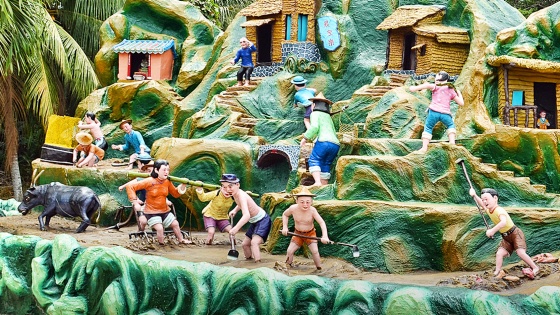Haw Par Villa
Haw Par Villa
Blog Article

Overview
Haw Par Villa, often called Tiger Balm Gardens, is surely an legendary concept park situated in Singapore. This exclusive attraction features site visitors a glimpse into Chinese mythology and folklore by its beautiful and intricate statues, dioramas, and reveals. Let us choose a closer look at the vital components of this intriguing place.
Record:
Haw Par Villa was at first crafted by Aw Boon Haw, the magnate behind the well-known Tiger Balm ointment. The park opened its doors in 1937 as a method to equally entertain and teach people about regular Chinese values, record, and beliefs. Throughout the a long time, it has undergone numerous renovations but has managed to retain its authentic charm.
Mythological Figures:
On the list of most important highlights of Haw Par Villa is its vast selection of statues depicting figures from Chinese mythology and legends. Readers will encounter figures like Journey towards the West's Solar Wukong (the Monkey King), 8 Immortals from Daoism, as well as important deities such as Guanyin (Goddess of Mercy) and Buddha Shakyamuni.
Topic Parks inside Haw Par Villa:
Inside of Haw Par Villa by itself are a variety of unique locations or sections:
Ten Courts of Hell: Probably Among the most intriguing areas of Haw Par Villa is exploring "The Ten Courts of Hell." Listed here site visitors can witness graphic scenes depicting punishments for numerous sins according to traditional Chinese beliefs about afterlife retributions.
Taoist-Mythology Sculptures: This space showcases spectacular sculptures depicting stories from historic Taoist myths. These lively artworks deliver to life tales which were passed down by way of generations in vivid depth.
Yard Sceneries: Outside of mythological sculptures lie serene gardens filled with picturesque landscapes adorned with lovely flowers and plants—an ideal Area for site visitors to unwind amidst mother nature's natural beauty or love an informal stroll.
Teochew Opera Centre: The Teochew Opera Centre is a traditional theater location that routinely hosts performances from the Teochew opera, an important kind of Chinese musical drama with distinctive regional attributes in its costumes, music, and storytelling.
Cultural Significance:
Haw Par Villa retains immense cultural importance as it provides a chance to discover several elements of Chinese culture, folklore, and religious beliefs. It serves as both of those an open-air museum and also a place for communal pursuits like festivals or instructional plans enabling readers to get insights into ancient Chinese traditions.
On top of that, the park's original intention was to educate people about ethical values via vivid depictions of heaven and hell – satisfying advantage and condemning vices. Thus Haw Par Villa acts as not just an amusement park and also a ethical guide teaching critical moral principles from common Chinese philosophy.
Contemporary Relevance:
In spite of currently being crafted many years back, Haw Par Villa continues to entice locals and travelers alike resulting from its uniqueness and timeless enchantment. The park has managed to Mix custom with present-day features by Arranging events such as art exhibitions, lantern festivals throughout mid-autumn celebrations showcasing the fusion among modern day aesthetics and vintage themes linked to the villa.
Lately, there are already initiatives by authorities to refurbish areas of the attraction although making certain its historical authenticity. This ongoing routine maintenance makes certain that Haw Par Villa continues to be accessible for generations to return when preserving its abundant heritage benefit.
Conclusion:
Haw Par Villa stands out amid Singapore's points of interest for its immersive expertise into mythical realms as a result of intricately-built sculptures depicting deities, legends, morality tales and punishments in Taoist mythology-influenced gardenscapes - all in a reflective surroundings emphasizing lifestyle classes determined by compassion proven in the direction of Other people as it conveys historical knowledge guided by ethical principles conducive for self-advancement Situated amidst beautiful scenic landscapes which makes it appropriate both of those for cultural exploration lovers considering China's vast mythology/heritage/backgrounds/legends simultaneously(proporotinately with thanks rverence read more in direction of central theme of representing traditional Chinese lifestyle and beliefs).